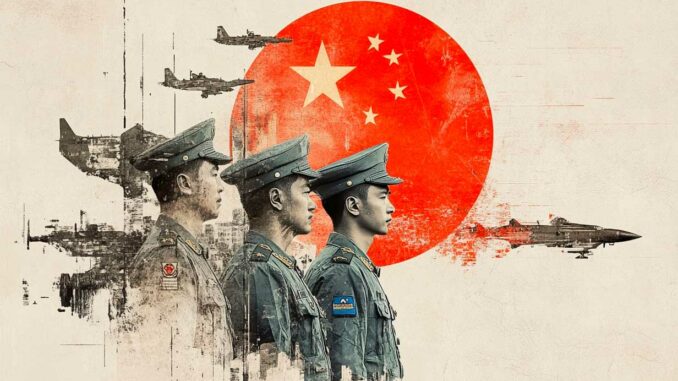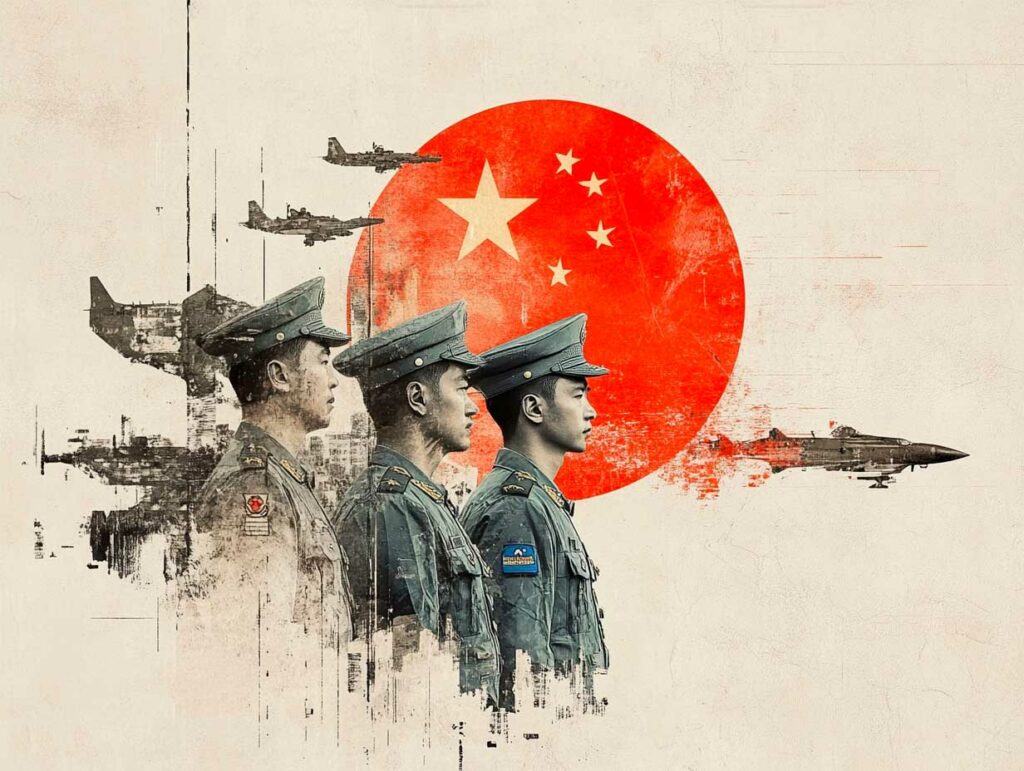
China’s military budget may reach $400 billion. Taking purchasing power parity into account, Beijing is catching up with Washington.
Official figures potentially underestimate Chinese military spending, which could reach $400 billion per year. Compared to the US budget of $916 billion, this sum seems lower, but purchasing power parity (PPP) completely changes the analysis. Taking PPP into account, China would reach more than 70% of US military capacity. In addition, the number of Chinese military personnel (2 million) exceeds that of the US (1.3 million). However, structural limitations—such as corruption, rising internal costs, and demographic aging—threaten this progress. Beyond budgets, the quality of leadership and training remains a key factor in military effectiveness, which is often overlooked in international comparisons.

Accounting differences in the assessment of military budgets
Comparing Chinese and US military budgets raises significant difficulties. China’s official budget is estimated at $296 billion, but several analyses suggest that it includes hidden funds allocated to defense, bringing the total to around $400 billion per year. By comparison, the US military budget is $916 billion to maintain an army of 1.3 million soldiers, compared to 2 million for China.
Accounting discrepancies are fundamental: China, like the former USSR, operates under an authoritarian system where financial data is neither auditable nor transparent. Estimates are therefore inevitably subject to uncertainty. In addition, the salary and logistics structures of the two countries differ: Chinese soldiers are less well paid, equipment is produced locally at lower cost, and social security contributions are much lower.
A Chinese missile, for example, costs on average 30% to 50% less than its Western equivalent. This means that the nominal budget does not reflect actual purchasing and production capacity. Structural cost differences must therefore be adjusted to obtain an effective comparison.
The effect of purchasing power parity (PPP) on military power
Purchasing power parity (PPP) is a method of estimating the actual number of goods and services that a country can buy with its currency. In a military context, this means that China gets more for less money, as the cost of equipment, personnel, and logistics is lower than in the United States.
Without taking PPP into account, the five largest military budgets are: the United States, China, Russia, India, and Saudi Arabia. With PPP, China is closer to 70% of the US effort, even though it only accounts for a third in nominal terms. When the figures are adjusted, China’s spending appears much higher and more efficient, at least on paper.
This raises a key strategic question: how effective is military spending really? If an American tank costs €10 million, but a Chinese tank with similar performance costs €4 million, the operational value of the US budget falls sharply in comparison.
This model also benefits countries such as Iran and Pakistan, whose military budgets represent approximately 6% and 4% of the US budget, respectively, but which maintain large, low-cost forces that are potentially capable of posing a credible local threat.
The internal limitations of the Chinese military model
The growth of China’s military budget is built on fragile foundations. Several internal factors compromise the effectiveness of spending.
First, corruption in the Chinese military is structural. Since the 1980s, Beijing has been trying to limit embezzlement, but with limited success. According to several studies, 20% of Chinese military funds are lost or misused, directly affecting the quality of equipment, training, and infrastructure. The Center for Strategic and International Studies (CSIS) report indicates that arms purchases are often inflated or diverted for personal gain by senior officers.
Second, China’s demographic trends are unfavorable. The country is experiencing a rapid decline in its working-age population due to a combination of aging and the effects of the one-child policy. According to official forecasts, China will lose 70 million workers by 2035. However, military strength depends directly on the availability of a young and mobilizable population.
Third, trade tensions with the United States are directly affecting Chinese export revenues. China saw its exports fall by 14.5% in 2023, leading to a contraction in public revenues and pressure on military funding. The urban youth unemployment rate now exceeds 20%, fueling a deflationary spiral and complicating the maintenance of a sustained military effort.

The budget illusion: operational efficiency and quality of command
A high budget does not guarantee operational efficiency. The decisive factor, often overlooked in public and media debates, is the quality of command, leadership, and training of troops.
Armies that prioritize constant training, rigorous unit control, and merit-based promotion perform significantly better in actual combat, even with fewer resources. In this regard, the United States remains ahead of the pack thanks to a military training system based on operational experience, interoperability, and innovation.
China, on the other hand, has suffered from a lack of combat experience since the Sino-Vietnamese War of 1979. Large-scale exercises are a recent development, and senior officers are often appointed on political rather than strategic criteria.
A well-equipped but poorly led soldier remains ineffective against a well-commanded unit. Command structure and operational doctrine play a decisive role in projection capability. This explains why armies such as those of Iran and North Korea, despite their size, fail in the face of better organized and trained forces.
Power projection: an asymmetrical budgetary challenge
Finally, one of the most overlooked aspects of the military budget is the cost of power projection. Defending one’s territory is much less expensive than projecting force abroad. A regional offensive requires at least 25% additional spending, and up to 100% more for a global intervention.
China, which is still relatively uninvolved in foreign military operations, has not yet built the logistical infrastructure necessary for global projection. In comparison, the United States has more than 750 military bases abroad, capable of supporting a rapid offensive anywhere in the world.
This imbalance shows that, despite its large budget, China remains essentially a continental power, while the United States retains a global strategic advantage that would be difficult to match without a profound shift in the global economic and political balance.
War Wings Daily is an independant magazine.